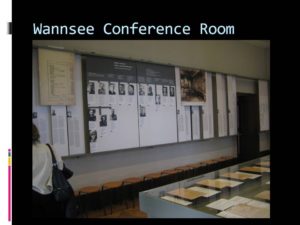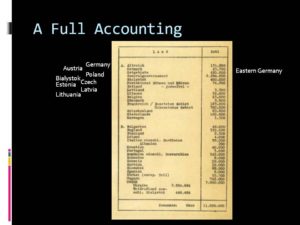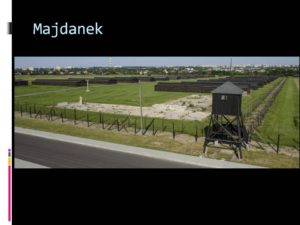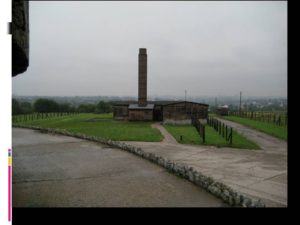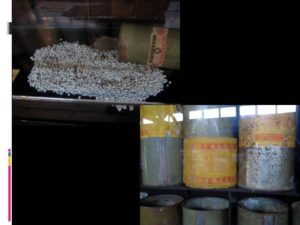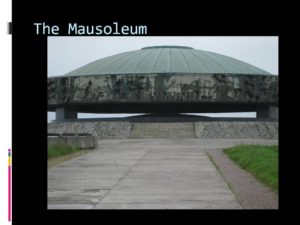Normandy Scholars Program, University of Texas, February 2018
I’ve been interested in history for as long as I can remember. But I could never imagine making a living from it so I decided to study Engineering and went to work in the tech industry. Low and behold, I found myself traveling all over the world numerous times over the course of a year. And suddenly, with a lot of weekends available to explore Europe, I was able to both make a living and study history. For more than 30 years I traveled all over the world selling products for my company during the week and then spending the weekend exploring WW1 and WW2 battlefields, cemeteries, museums and other interesting places from the UK all the way to Volgograd, or Stalingrad as it was called during WW2. I’ve crawled around in countless bunkers and unfinished Nazi underground tunnels.
And I’ve explored 38 concentration camps and death camps. It’s unlikely that you’ll meet someone who has been to more of these places than me. Many of them have become well visited museums. But many of them are just abandoned structures lost in a forest. Reminders of a war that ended more than 70 years ago. Each still has a story. Always unique. Often horrendous.
I keep myself busy these days by writing a blog at richardmbrook.com on various things from 20th century military history that scream at me to be written about. I’ve been spending a lot of time working with a few others to try to convince Congress to pass a Bill that would recognize the service of some 15,000 Americans who crossed the border into Canada before Pearl Harbor and fought with the British and the Canadians. More than 1000 of them came from Texas.
And I speak to different groups around town about these subjects and of course also the Holocaust.
For me, history is like a complex jigsaw puzzle that looks different from every angle. When you’ve pieced it together, the story varies depending on the angle from which it’s viewed. That’s one of the reasons why this course is so interesting. WW2 should be studied from many points of view to grasp its complexity. There are never simple answers.
Today I want to lead you on a journey that will take you to a small city in Poland called Lublin and a camp called Majdanek.
Let’s start by listening to a survivor explain how she ended up in Majdanek. Henya Bryer survived the Holocaust and ended up in South Africa. She was first forced into the Jewish Ghetto in Radom and then moved to Majdanek. But after Majdanek she was sent to Plazow (where Schindler recruited his Jews). Then to Auschwitz. As the Russians approached in January of 1945 she was sent on a death march towards Germany. She ended up in Bergen-Belsen at the same time as Anne Frank and sister were there. She survived the typhus epidemic that killed Anne Frank and her sister Margot.
Here’s the first part of her story.
https://www.youtube.com/watch?v=AXlbU5ZENy0
(Watch the first 10 minutes of this documentary
Lets go back and see how this all began. Here’s a map of Poland.
Lublin is SE of Warsaw. Majdanek sits on the outskirts of Lublin.

If you look at a post WW1 map of Poland and a post WW2 map of Poland you see some OBVIOUS differences. All these changes to Poland’s 20th century borders came about because Poland is essentially caught geographically between the Russians who wanted to spread their empire westward and the Germans who wanted to spread their empire eastward. I describe Poland as the ham in the ham sandwich, stuck between Germany to the west and Russia to the east. Throughout history, invading armies crossed Poland numerous times in history from the north (the Swedes), the south (The Hapsburgs), the east (the Russians) and west (first Napoleon and then the Germans). So it’s not surprising that the largest armies of world during WW2 surged back and forth across Poland. The result was that Poland suffered like no other country in the 20th century and Jews in Poland suffered like no others.
It’s also not a historical accident that so many Jews lived in Poland.

In 1791 Katherine the Great gave the Jews the choice to either convert to the Russian Orthodox Church or leave Russia. She created the Pale of Settlement which allowed for Jews to live in certain lands that the Russians had recently absorbed and it included the area of Baltic Republics, Poland, Ukraine and eventually extended from the Baltic in the north to Black Sea in the south where cities like Yalta and Odessa and even Sevastopol in the Crimea had large Jewish populations.

On June 22, 1941 the Nazi’s attacked eastwards into Russia. Around 4 million Germans attacked along an 1800 mile front. They brought with them 600,000 vehicles and 700,000 horses that were used to pull supply wagons and artillery.
Three armies led by 3 very capable generals led the way.
The Northern most German Army under Von Leeb headed north through the Baltics towards Leningrad
The Central German Army under von Bock headed towards Moscow
And the Southern Army under von Rundstedt headed south towards the Caucuses, the Crimea and the oil fields of Baku.
Left to their own devices, these German Generals might have won the war for Germany. But, as our luck would have it, Hitler thought he was smarter than all of his Generals and not a week went by without him interfering in their plans. Before it was over, most of the nearly 5 million Germans who entered Russia were either captured or killed. Most of the 600,000 vehicles were destroyed and most of the 700,000 horses either froze to death or were eaten by the starving German Army.
In Stalingrad alone, more Germans were killed or captured than the combined allied loses on the Western Front.
But long before the German Army was beaten at Stalingrad they first invaded across Poland and through the Pale of Settlement and into Russia bringing with them their theories of racial superiority.
They thought very little of slaughtering the “unter-menchen” with whom they came into contact. Slavs, Jews, Roma… Every non-Aryan was destined for destruction.
Even before the invasion of Russia, the Germans were already rounding up and abusing the Jews. The Jews in Germany and then Austria, through the Nuremberg Laws of the 1930’s were stripped of their citizenship and the right to work. When the war started, the rest of Europe’s Jews found themselves in peril. Had the Germans won the war, every Slav, Jew and Roma would eventually have been murdered.

After the invasion of Russia began, the Holocaust went from bad to worse. Huge number of Jews ended up in the hands of the Germans as the Wehrmacht surged east. The murdering Einsatzgruppen, thugs, many taken from German prisons, followed behind the Wehrmacht shooting large numbers of Jews.
Often the local Lithuanians, Estonians, Latvians, Poles and Ukrainians helped
They were happy to help round up Jews and turn them in.
Or, even murder them themselves.
Often in public spectacles with thousands of locals watching.
Some of the worst atrocities were not committed by the Germans but by these local militias who joined the German cause of ridding their country of its Jewish population, making it Juden frei.
The Germans took all the Jews belongings but the locals were left to fight over who was going to move into their homes and take their land.
The first part of the Holocaust can best be described as death by bullets.
But, there were so many Jews that they couldn’t shoot them fast enough.
You’ve all seen the videos of Jews being forced, beaten onto trucks. And then chased off the trucks into pits where you could see the Jews being shot by the hundreds. Then more Jews being forced to stand on the edge of the pit. And more shootings. The Germans loved to document all of it so there are lots of videos showing this.
But process didn’t kill the Jews fast enough. 6 million people are a lot of people to shoot 1 by 1.

And there were also competing priorities at play here. Some wanted to work the Jews to death in slave labor factories and camps where they would make armaments for the German war effort. Others just wanted to slaughter the Jews as quickly as possible. The competing priorities first sent tens of thousands of Jewish men to slave labor camps.
This map explains Oscar Schindler. He had a contract to make enamel pots with slaves. He just decided to save his Jews. A handful of other tried too. Most didn’t.
To house the old, the infirm, the women and the children, Ghettos were set up all over Poland and the Pale of Establishment. The Ghettos themselves became slave labor camps. Inevitably they also became disease laden cesspools of starvation and death. And while all of this continued, the German Army kept advancing into Russia and more and more Jews continued to fall under German control. The Ghetto at Radom holding Henia Bryer’s family was just one of dozens of such Ghettos.
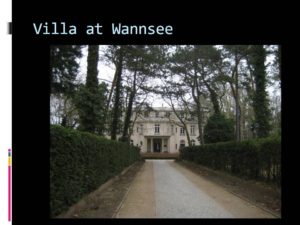
In January of 1942, at a villa on the Wannsee outside Berlin, Reinhardt Heydrich, Adolph Eichmann and 13 other Nazi party members met to come up with a new plan.
A final plan that would to solve the Jewish problem.
Eichmann had a list with the number of Jews in each European country to be murdered.
Systematically.
In both death camps and work camps.

Majdanek became a major part of this plan. But it didn’t start out that way.

Majdanek was built initially for use as a Russian POW camp.
Construction began in the fall of 1941, just 4 or 5 months after the German invasion of Russia.
The original plan was to house 25,000 POW’s.
But as the Germans surged into Russia, they were surprised at how many POW’s they were capturing. They ended up with more than 3 million captured Russian POW’s. They needed some place to put them.
So the plans for this camp and many others kept expanding.
From 25,000 to 100,000 to 200,000 and beyond.
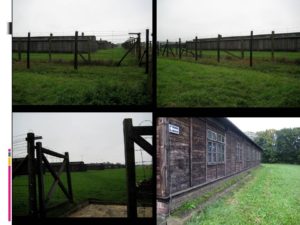
The camp was build with Jewish and Polish slave labor. Several thousand were tasked with building the camp over the winter of 1941-1942.
But conditions were so bad that a Typhus epidemic broke out and most of the slave laborers died.
In early 1942, there were only enough barracks for 20,000 but 50,000 would eventually be jammed into this space.
The camp was not big.
Just under 1 sq mile. It was surrounded by an electrified barbed wire fence and watch towers. Just outside the fence were workshops and storage facilities.
They were built for an Austrian company, Steyr-Daimler-Puch who came there to use the inmates as slave labor to manufacture the common bolt action rifle used by German infantry throughout the war. As with all slave labor camps, the owners of the companies paid the SS between 2 and 5 Reich marks/day for each slave. They taught them how to run the equipment for their products while at the same time they starved them to death. A rational person might question the process of training someone to run a piece of complicated equipment only to then starve them to death. It would seem to be at odds with making quality products. But they did. Over and Over again. They could not decide which was more important. Making quality parts to fight the war or murdering people.
The location of Majdanek was central to the main Nazi death camps of Treblinka, Sobibor and Belzec. These camps all began operating in the spring and summer of 1942 and huge amounts of clothing, valuables and other belongings were being looted from those being murdered. It all had to be sorted as the SS was selling the loot for profit. Sorting went on at these camps but so many Jews were being murdered and there was so much loot that the inmates at Majdanek were also tasked with this activity.
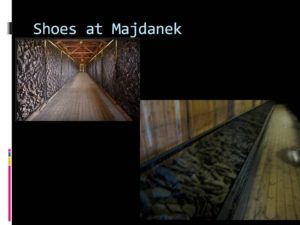
When you visit, you’ll see some of the loot that still remains.
In one of the barracks there are hundreds of thousands of shoes bearing witness to these crimes.
During the course of 1942, Treblinka, Sobibor and Belzec were overwhelmed with trains bringing Jews to murder. They could not murder people fast enough
So a decision was made to turn Majdanek into another death camp, just as Auschwitz would also be turned into another death camp.
Jews from Slovakia, Holland, Belgium, France, Greece, Russia and Poland ended up at Majdanek.
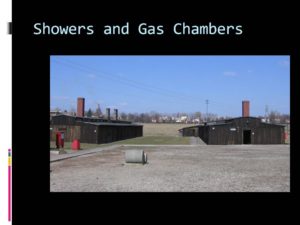
By September of 1942 the gas chambers were operating and the Germans were using Zyklon B and also diesel exhaust from captured Russian tanks to gas victims.
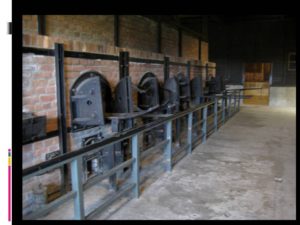
Gassing large numbers meant that they needed crematoria:
It was made by a company called Degussa and made from Hydrogen Cyanide.
Sold by Tesch and Stabenow (TESTA for short), for delouse clothes and buildings and even ships.
Bruno Tesch and another employee of Testa Karl Weinbacher suggested using it on humans to the SS. For their involvement in this, both were put to death in 1946.
Degussa was part of IG FARBEN, a huge chemical and pharmaceutical company dating back to pre-war Germany. Employees of the Company won a number of Nobel Prizes including Otto Bayer and Carl Bosch.
The Company became a major player in Hitler’s National Socialist plans with Germany’s largest companies working in lockstep with the Nazi Party. IG FARBEN was involved in nearly every large scale industrial effort by the Nazis to build oil refineries and chemical plants for munitions all over Eastern Europe. All using slave labor.
And of course they also knowingly manufactured and sold Zykon B to the Nazis for use on humans. For all of this, IG FARBEN would get its very own war crimes trial at Nuremberg after the war. 13 of 24 IG Farben directors would be sentenced to prison after the war.
The shareholders of IG Farben lost their entire investment as the company was split into smaller pieces. Many of these companies still exist and include AGFA, BASF, Bayer and Sanofi.
The shareholders of IG Farben still complain to the German government about the loss of their investment and still petition the German government to compensate them for the loss of their investment.
Majdanek operated for 34 months. In July of 1944 the Germans abandoned the place quickly in advance of the arriving Russian Army.
More than 1000 inmates were sent west in a death march towards Germany but thousands of inmates too sick to walk were just left in the camp.
The Germans only partially destroyed the crematoria and when the Russians arrived on July 24 they found the camp nearly intact as it stands today.
It was the first major concentration camp liberated and news of what went on there flashed around the world and was widely publicized.
Originally the Russians said that 400,000 Jews were killed at Majdanek among an additional 1.5 million non Jews.
But today the museum lists about 80,000 victims of which 60,000 were Jews.
The numbers get very complicated because Jews and other slave laborers like Russian POW’s and Poles who died working in the slave labor sub camps were often not counted.
So a completely accurate count is impossible.
Majdanek had at least 3 sub-camps, all involved in making armaments and under the control of the Waffen SS. The largest was a camp called Budzyk which was making Heinkel aircraft.
The Russians were keen to put captured Germans who were tied to Majdanek on trial. They wanted to show the world how the Fascists behaved in Eastern Europe. So in December of 1944, 4 SS guards and 2 Kapos were tried and executed by the Russian Army.
The Russians also published a long report about what they found at the camp. You can find it on-line filled with gruesome descriptions of the treatment of Poles, Russians, and Jews.
Fewer than 200 guards out of more than 1000 who worked at the camp were ever prosecuted.
From Majdanek, all 5 Commandants were executed or committed suicide.
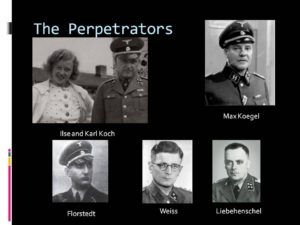
The most notorious was the first Commandant Karl-Otto Koch.
He was in charge from the beginning from October 1941 to August 1942. Before arriving at Majdanek, Koch was commander at a concentration camp in Berlin called Columbia, then at Esterwegen and then at Sachsenhausen (north of Berlin).
From Sachsenhausen, Koch took over at a new camp called Buchenwald.
You’ve all heard of Elie Wiesel. He survived Buchenwald.
By the time Koch got to Buchenwald, he had begun stealing loot from the SS for his own benefit. The SS found out but they chose to ignore his thefts for the moment.
In August of 1942, shortly after 86 Soviet POW’s escaped from Majdanek, Koch was fired by Himmler. He spent the rest of the war in an SS job in Berlin.
Towards the end of the war when it became obvious that Germany was going to lose, the SS turned on itself looking for those who “caused harm to the Nazi effort”. Koch was charged with corruption, embezzlement, drunkenness, sexual offenses and murder.
He was shot by the SS on April 5, 1945 a month before the war ended. Saved the Allies the trouble of doing it themselves.
His wife was no peach either. Koch was married to Ilse Hohler.
In 1936 and she joined him at Buchenwald. She stayed there after Koch went on to Majdanek. She was known as Die Hexe von Buchenwald which translates into the Witch of Buchenwald.
The West Germans tried and convicted her for murdering prisoners at Buchenwald who had tattoos. She murdered them for their skin and made it into lampshades.
For this, among other crimes, she was eventually was tried and given a life sentence. She committed suicide in jail in 1960.
Max Koegel, took over in August 1942 from Koch.
He was in charge when the gas chambers were installed at Majdanek. Before Majdanek, he was the 2nd in command at Dachau and then he moved to Ravensbruck (north of Berlin, a camp specifically for women).
He left Majdanek in early 1943 and went to Flossenburg in Germany where he was in charge until the end of the war.
When the war ended, he took off and wasn’t arrested until June of 1946 when he was taken to Nuremburg. Knowing what was coming, he hung himself in his prison cell one day later. Saved us the trouble.
Hermann Florstedt, took over from Koegel in November of 1942.
He had been at Sachsenhausen from 1940 till 1942.
After a year at Majdanek, in November of 1943, Florstedt was charged with embezzlement and corruption for stealing loot from the SS that came from the murdered Jews of Belzec, Treblinka, and Sobibor.
Like Koch, he was executed on April 15, 1945 by the SS just 2 weeks before the war ended. Saved us the trouble.
Martin Weiss took over from Florstedt in November of 1943. Before arriving at Majdanek he was the commandant at Dachau and at Neuengamme.
He also was the Commandant at KZ Arbeitsdorf. Arbeitsdorf was located in Wolfsburg and was built by Ferdinand Porsche who tried to use slave labor to build Volkswagens.
But Arbeitsdorf only operated for 6 months before it was shut down as the NAZIs realized that every resource was needed for their war effort, not for making cars for Porche.
The day before Weiss took over in Majdanek was the worst day in the history of Majdanek, more than 18,000 Jews were murdered as part of an SS plan to rid get rid of every Jew within the Lublin and eastern side of Poland. They called it the “Harvest Festival”.
The SS decided that every Jew in every slave labor camp in eastern and southern Poland should be executed before an expected upcoming Soviet attack. That Soviet attack turned out to be the recapturing of Kiev on Nov 6. There had been Jewish uprisings in Sobibor and Treblinka and in the Warsaw and Vilnius Ghettos.
To allay concerns about uprisings in their slave labor camps around Poland during a major Soviet offensive, the SS decided to kill all the remaining Jews at one time. Some 48,000 Jews were murdered in a 2 day period, one of the worst atrocities of the war.
At the Majdanek main camp 18,400 were murdered on November 3, 1943. By November 4th, the entire eastern part of Poland was Judenfrei.
The perpetrators of this slaughter were a reserve battalion of police from Germany that included many German prison inmates who were paroled for this duty.
These 500 members of just this one police battalion would ultimately be responsible for murdering more than 80,000 Jews.
Weiss took over as Commandant the day after and set about burning all the dead bodies.
It took more than 2 weeks of burning bodies, 24hours/day to get rid of the evidence.
Weiss left Majdanek on May 18 of 1944.
He ended up at a place called Muhldorf where the Nazis were trying to use slave labor to build Messerschmitt 262 jet fighters in an underground factory cut into the mountains.
Typhus outbreaks and terrible working conditions doomed thousands to death. The Nazis never did get the factory running as they were running out of time.
Eventually the surviving inmates were sent to Auschwitz.
Weiss ended up back at Dachau where the US Army arrested him on April 29, 1945. He was tried, not at Nuremburg but as part of the Dauchau war crimes trials. He was hung at the end of May in 1946.
Arthur Leibehenschel was the fifth Majdanek Commandant taking over from Weill on May 19, 1944.
He was there until the camp was emptied in advance of the Soviets arriving in late July 1944. So he was just there for 2 months.
But he was already a notorious SOB.
He took over from Rudolf Hoss at Auschwitz in December of 1943 but Hoss returned to Auschwitz in May of 1944 because the SS didn’t think that Leibehenschel was nasty enough and Leibehenschel was sent Majdanek.
Leibehenschel was captured after the war and sent to Poland where they tried and hung him in 1948.
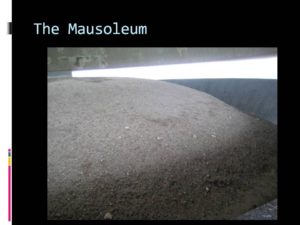
One of the first structures you’ll see at Majdanek is an enormous Mausoleum built in 1969.
1300 cubic meters of soil mixed with ashes and bone were placed in a large mound and huge concrete copula was built on top of it.
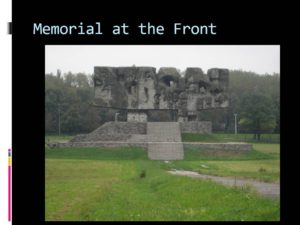
Another memorial is at the front entry. The giant letters spell Lublin in Yiddish.
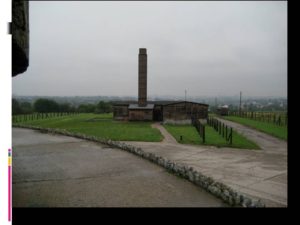
The crematoria that you will see when you visit are actually reconstructed around the ovens that the Russians found fully intact when they arrived in July of 1944.
Several dozen barracks are still standing and are used to house exhibits and the enormous display of shoes.
Majdanek does not see nearly as many visitors as other camps.
Millions visit Auschwitz annually. Auschwitz is often so crowded you can barely get a feel for what went on there as people move from room to room with their tour group.
But Majdanek is totally different. You may be there alone when you visit.
When I visited, there were maybe 2 other cars in the parking lot. The ghosts of the murdered loom ever present as you walk through the front entrance
As I mentioned, over the years, I’ve visited 38 camps.
Majdanek is particularly haunting because so much of the camp still exists and you are able to retrace the footsteps the tens of thousands of murdered souls.
You are there, almost alone with your thoughts, with those who were murdered for no other reason other than pure evil and pure hatred.
When I visit these camps, I always say prayer for the dead. When you all visit, keep in mind that you are there to bear witness to the brutality.
It’s very hard to understand how one of the most modern advanced countries in the world, a place that spawned poets and writers and composers like Heinriche Heine, Johann Goethe and Beethoven, can suddenly lose its mind and turn to murdering so many innocent men, women and children.
It didn’t happen all at one.
It happened because people ignored all the warning signs of what was to come until it became too late to stop it.
That’s why it’s important to understand how the Holocaust happened. Maybe just maybe we can help keep it from happening again.


